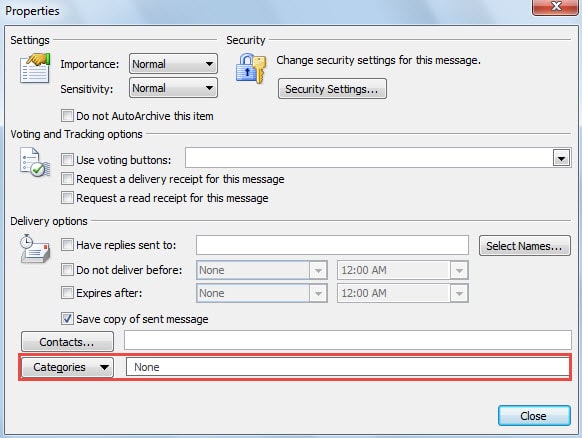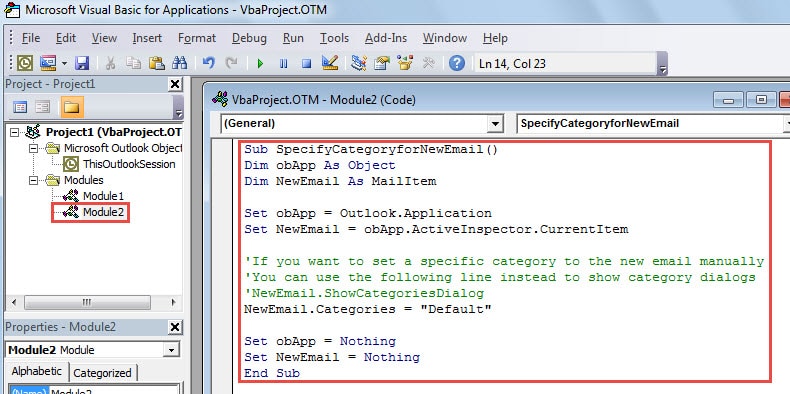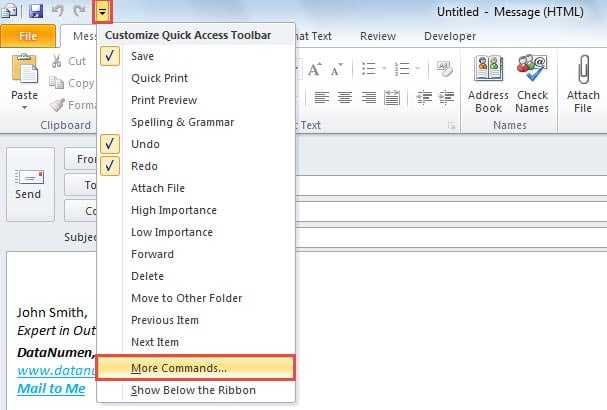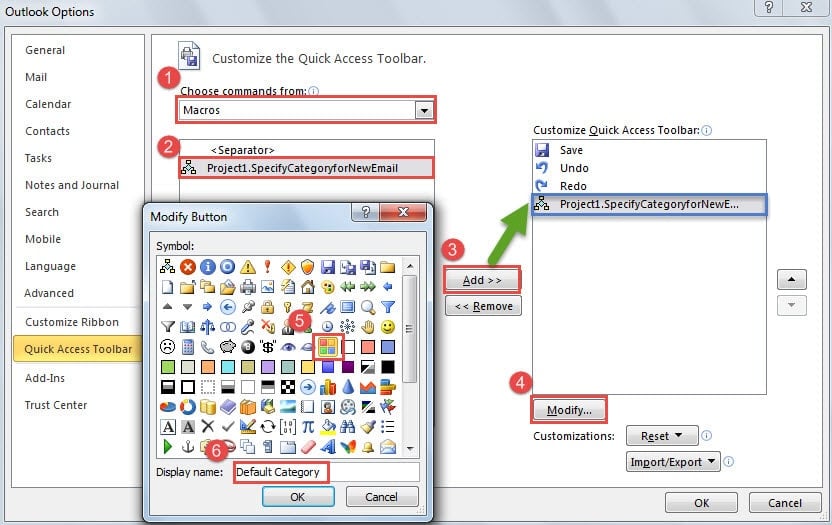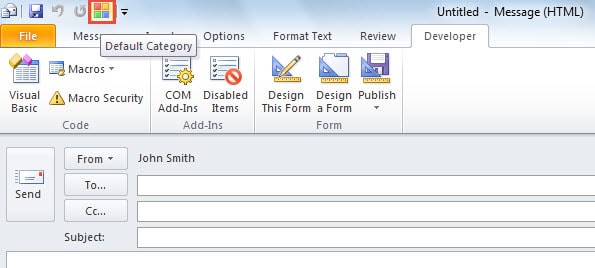When you’re composing a new Outlook message, you will find “Categorize” button invisible. It is generally in ribbon. At this point, if you wish to quickly set a category for a new mail, you can use the following 2 tips.
It is very easy to color categorize a received or sent email in Outlook in that there is an obvious “Categorize” button on “Home” tab. It is shown as the following screenshot. However, when you’re composing a new message, you will discover that the button is gone. Actually, it is hidden instead of being removed. You still can find it out in mail options. Here are 2 ways to quickly categorize the new mail when composing it.
Set the Category for a New Outlook Message Manually
- For a start, launch Outlook and create a new email.
- Then in the new message window, switch to “Options” tab. And click on the extension icon in the bottom right corner of “Options” group to show more mail options.

- Eventually in the popup dialog box of “Properties”, the “Categories” button is at the bottom. Click on it, and you will be able to choose a color category from the drop down list.
Auto Assign a Default Category to a New Outlook Message
Step 1: Copy the VBA Code to a New Module
- To begin with, in Outlook main window, shift to “Developer” tab and click on “Visual Basic” button in “Code” group.
- Then in the latter popup window, click “Insert” in the toolbar. And select “Module” from the drop down list.
- After that, a new module will show up below. You should copy the following code into the new “Module” window as the screenshot below:
Sub SpecifyCategoryforNewEmail()
Dim obApp As Object
Dim NewEmail As MailItem
Set obApp = Outlook.Application
Set NewEmail = obApp.ActiveInspector.CurrentItem
'If you want to set a specific category to the new email manually
'You can use the following line instead to show the Category dialog
'NewEmail.ShowCategoriesDialog
NewEmail.Categories = "Default”
Set obApp = Nothing
Set NewEmail = Nothing
End Sub
Note:
- If you hope to manually set a specific category to the new message, replace Categories = “Default” with Email.ShowCategoriesDialog, as the comments in the above VBA code. It will open the “Color Categories” dialog box. In this dialog, you can select one category manually.
- Moreover, you can replace “Default” string with other category’s name as per your needs, such as “Red category”, “Yellow Category”, etc.
- After that, minimize the current “Visual Basic” window. And return to Outlook main window to create a new email.
Step 2: Add the Macro to Quick Access Toolbar
- Next in the new message window, hit the down arrow in the Quick Access Toolbar and choose “More Commands” from the drop down list.
- Subsequently, in “Outlook Options” window, you should take the following steps:
- Firstly, select “Macros” in “Choose commands from”.
- Then from the list, choose the previously created macro.
- Click “Add” button.
- After the macro gets added to the right part, click “Modify” button.
- In “Modify Button” dialog box, specify an icon for the button, such as.
- Next change the display name, like “Default Category”.
- Lastly, click a series of “OK” until all the dialog boxes are closed
- After backing to New Message window. You can click the “Default Category” button in Quick Access Toolbar to set the “Default” category to the new mail.
- Finally you can compose the mail as usual and send it out. After sending it out, you can check it in the sent items folder. It must have been categorized in “Default”.
Comparison of the 2 Methods
| Methods | Advantages | Disadvantages |
| Set the Category Manually | By this means, you can categorize the new message without needs to recur to other project or tool. | It is time-consuming in that you should perform the repetitive operations to find the “Categories” button every time when you need. |
| Set the Category via VBA | It’s much more convenient than the above method. | 1. This tip will demand you to firstly enable macros in “Trust Centers”. |
| 2. You had better get some knowledge about VBA in advance. |
Beware of Unknown Macros in Emails
Nowadays email borne virus has become increasingly rampant. Malicious emails may come packed with dangerous links, attachments and macros. Therefore, you should keep tabs on these potential risks. Also, you’d better get hold of a potent tool, like DataNumen Outlook Repair. It can repair PST problem with ease.
Author Introduction:
Shirley Zhang is a data recovery expert in DataNumen, Inc., which is the world leader in data recovery technologies, including repair SQL Server file corruption and outlook repair software products. For more information visit www.datanumen.com
